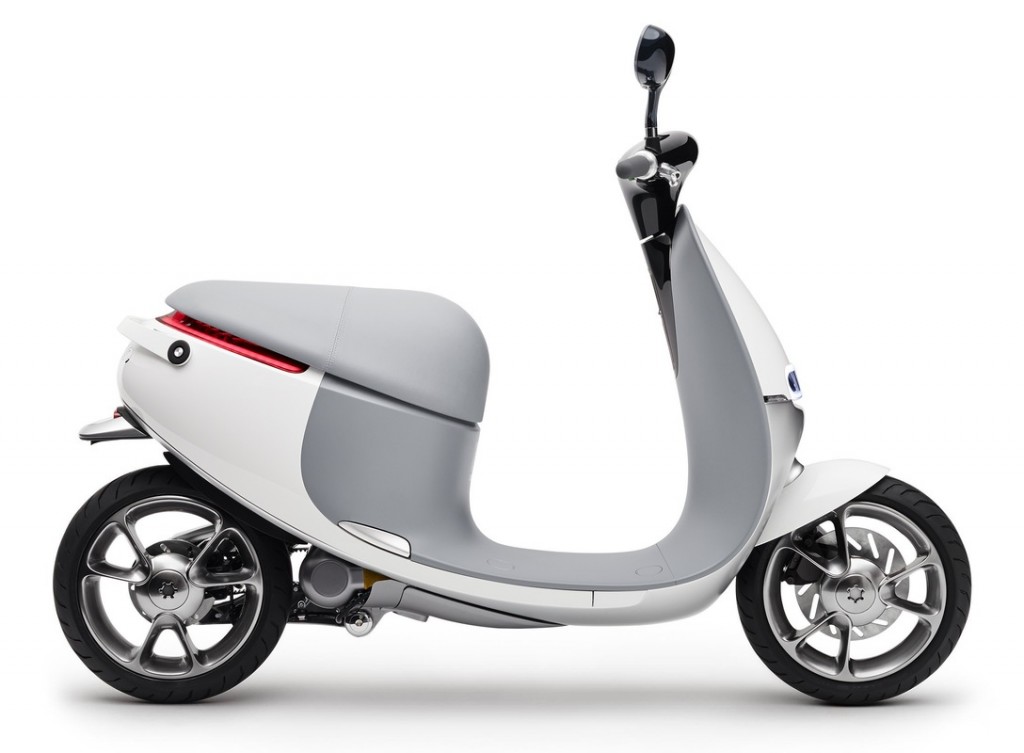Gogoro Smartscooter And Crowdsourcing Charging Network
Gogoro is a name unfamiliar to many that sounds like a cute cartoon character that is anything but. Headed by Horace Luke, a former designer at HTC, it’s a Taiwanese startup with an innovative electric scooter and battery charging solution.
Electric scooters aren’t new but Gogoro’s version has a novelty factor. Called the Smartscooter, it’s smart in the sense that it can be connected to your smartphone or smartwatch, allowing you control performance, perform diagnostics, customize the display or find a battery-swap Gostation. It’s packed with 80 sensors and equipped with a Smart mode to analyze your riding pattern to optimize torque and battery life. On a full charge, the twin Panasonic-cell batteries will give up to 100km worth of juice.
Security-wise, the scooter has a smart key and lock which utilizes Bluetooth to communicate with your smartphone so that only you can unlock it and switch it on.
The scooter has an “Aeroframe” aluminum monocoque chassis that’s revolutionary ultra-lightweight and strong; 30% lighter and twice as strong as any scooter before. The G1 electric motor is power-packed, ultra compact and has a 98% power delivery efficiency. It uses a unique rotor, integrated planetary gear and mega-density coils wound with over 66 meters of ultra thick gauge oxygen-free copper wire. The drive belts are racing-grade carbon composite belts engineered by Gates to harness the motor’s torque to deliver instant power on command while the integrated liquid cooling system ensures efficiency.
It goes 0-50km/h in 4.2 seconds with a maximum speed of 95km/h. Impressive for traffic light dashes and city rides. Designed with the rider sitting in the center to achieve a balanced weight distribution for better handling. The absence of an exhaust pipe or external gearbox allows you to lean more into turns. Even the turn signal is smart enough to turn itself off once you’ve done a turn.
As for swapping spent batteries, this is done at the GoStations and takes about 6 seconds of your life. This is also the reason why Smartscooter isn’t yet widely available – establishing an extensive battery-swap network is costly and time consuming. Gogoro is still selective of its presence and will only enter a market if there is sufficient demand. Thus far, it’s only found in Taipei (established last year); about 3000 of them plus 125 stations (Smartscooter users pay a monthly subscription to swap batteries at the charging stations). But if all goes as planned, they will soon be seen in Amsterdam where bicycles are currently the main mode of transport for many.
At the ongoing Consumer Electronics Show in Las Vegas, they announced a crowdsourcing plan and a compact charger for the home. The crowdsourcing plan, called Open Proposed Energy Network (OPEN), allows a community to request for their presence via their website. If enough businesses and individuals from a particular town or city request for it, Gogoro will look into establishing a presence there. Businesses such as cafes and convenient stores can get the chargers for free if they make them available to the public. Individuals however, will have to fork out for the compact GoCharger.
The scooter currently costs US4000, which is steep but the price should come down with stronger demand. If you consider the congestion in the city and the ever-increasing parking and toll charges, it may not be impractical for a place like KL to have something like the Smartscooter. Being electric, there’s no foul emissions and almost no noise anyway. Can you imagine a quieter city with cleaner-smelling air?
But with anything electric and considering our tropical wetness, there is a natural concern about getting the scooter soaked and risking a short circuit or electrocution. Fear not, the drivetrain is sealed and waterproofed and Gogoro claims it can be ridden through 30cm of water.































